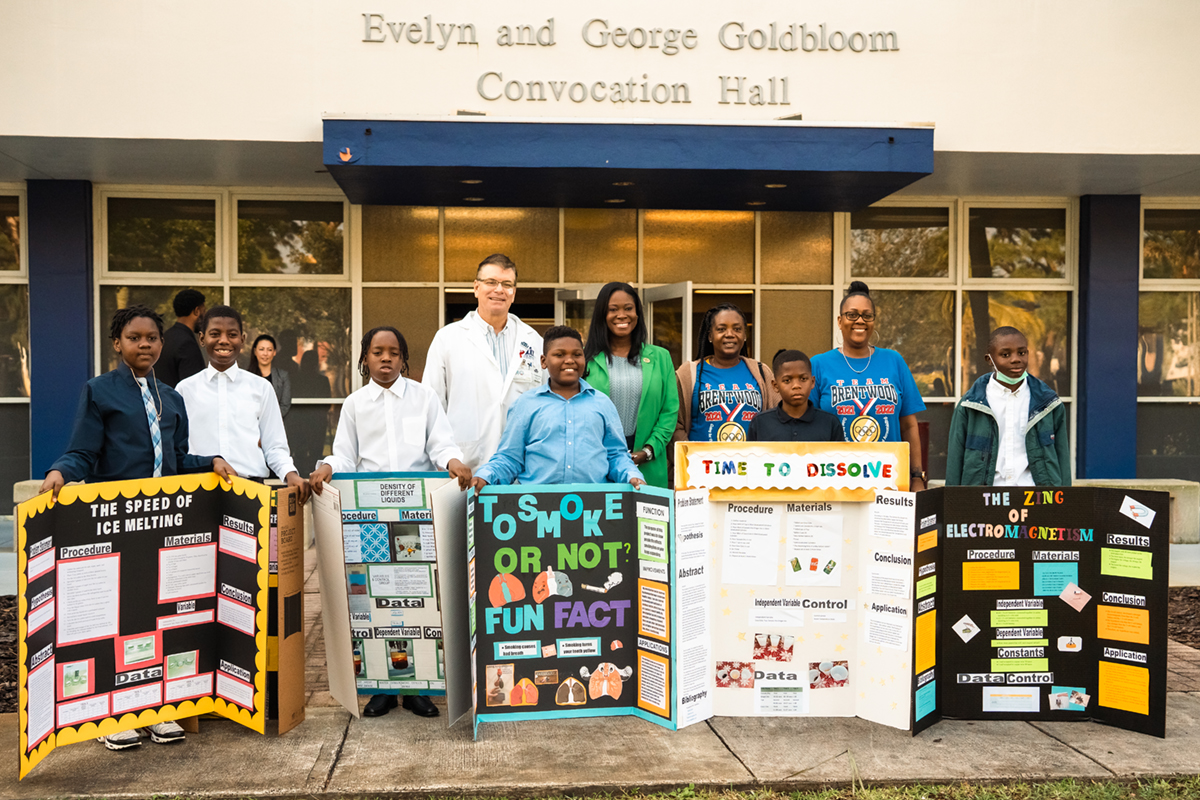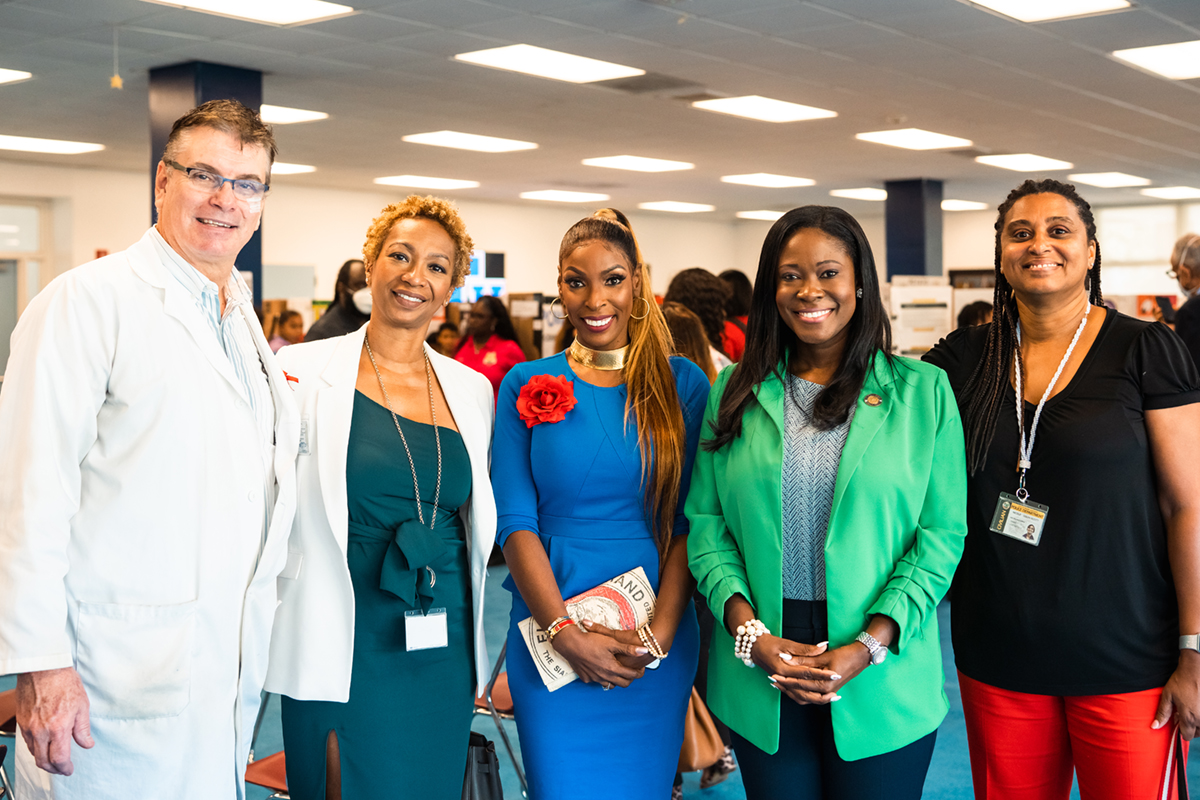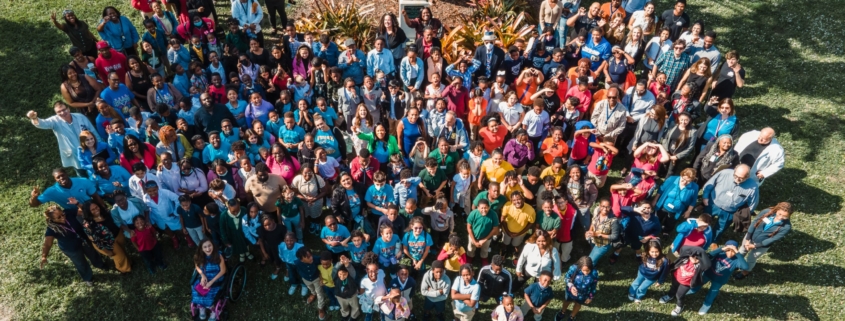The Science Fair Returns!
Serenity Mathieu, Alice Gutierrez, and Jakarri Hendricks were three of the more than 140 budding scientists who came to St. Thomas University on Monday for the 11th Annual City of Miami Gardens Science and Engineering Fair.
Mathieu, a second-grader at Norwood Elementary, created a science project called: “The Road to Affordable, Clean Energy.”
“We’re using too much energy,” said Mathieu, whose project centered around windmills.
Gutierrez, a fifth-grader at Scott Lake Elementary, built a project named “Hydro Power,” and it took her one month to complete her experiments.
“I wanted to know if hydraulic power could be used to lift a small object without the use of batteries,” said Gutierrez, 12. “After a few adjustments, I was able to create an arm capable of lifting small objects.”
Hendrix, a fifth-grader at Golden Glades Elementary, completed a volcano project.
“I wanted to know what would happen if I put vinegar and baking soda in my volcano,” said Hendrix, 10. “It erupted.”

In a sense, STU was erupting on Monday – erupting with youthful knowledge, curiosity, and enthusiasm.
There were eight elementary schools from Miami Gardens represented, and Council Member Linda Julien was among those brimming with pride.
Julien, the first Haitian-American to serve as a Miami Gardens council member, said there is a reason STU has hosted this science fair the past 11 years.
She also said that stimulating the minds of children interested in science is vital, and, as an added benefit, it is great to let these kids dream about their future possibilities on a college campus.
“We want to propel our students to think innovatively so that they can build careers that will allow them to help shape our future,” Julien said. “This will allow them to create things that are sustainable for future generations. When we put in the thought and the work behind the science fair, we thought about community. We thought about great community partners, which is why we’re holding it at St. Thomas University. You have always been great community partners, and my office understands that an investment in our children yields the greatest return.”
Julien said she was incredibly encouraged when she looked at the students at the science fair.
“I’m thinking, ‘Wow, we have future geologists here. We have future data analysts,’” Julien said.
“We had one student who created a drone. In her conclusion, she talked about how that drone can help police do needed surveillance. That drone could also render aid. Science revolves around everything we do. Technology, engineering, mathematics – these things allow our students to think outside the box.”

Professor Ismael Voltaire, STU faculty member and the director of natural sciences, said the science fair is yet another way the university connects with the community it serves.
“It gives us the opportunity to give back, especially since most of the students at this fair are African-American or other minorities,” Voltaire said. “For a lot of these students, it is the first time they are exposed to science at this level.
“They are accomplishing small goals, but this puts in perspective what they can accomplish in the future.”
Voltaire said it took two months for STU to prepare for the fair.
In addition, many STU students who are majoring in science have served as mentors to the elementary school kids.
Dr. Jeffery Plunkett, who joined STU’s College of Health Sciences & Technology in 2002 and serves as a professor of biology, was practically beaming on Monday when talking about the fair.
At first, he poked fun at himself about being “an old guy in a lab coat.”
But then he turned serious.
“This is great,” Plunkett said. “These kids get to see our young professors who are faculty and scientists. These kids can say, ‘I want to be like them.’
“That’s what’s important. I was just speaking to a couple of kids about their projects. I said to them: ‘This is the beginning of you becoming a nerd like me.’”
Maybe it was not always the case, but nerds are now cool.
With so much evidence pointing to climate change and the growing need for sustainability, the future – to a large extent – is in the hands of young scientists, and that includes finding the cures to diseases.
Plunkett said kids have a natural curiosity about why things are, and that wonderment is useful in science.
“We need to foster that in our children,” Plunkett said. “We’re so happy to have these kids here on our campus.”

